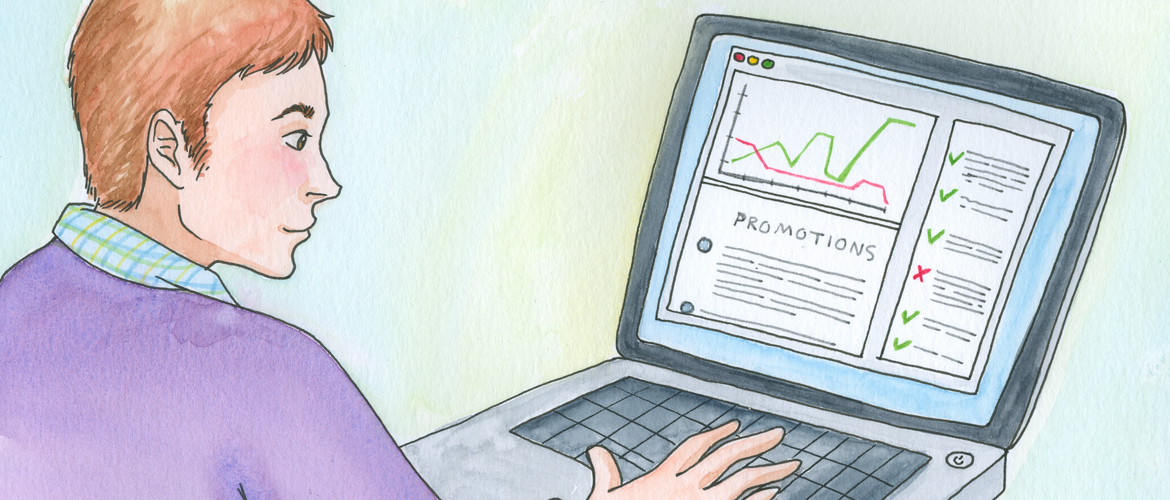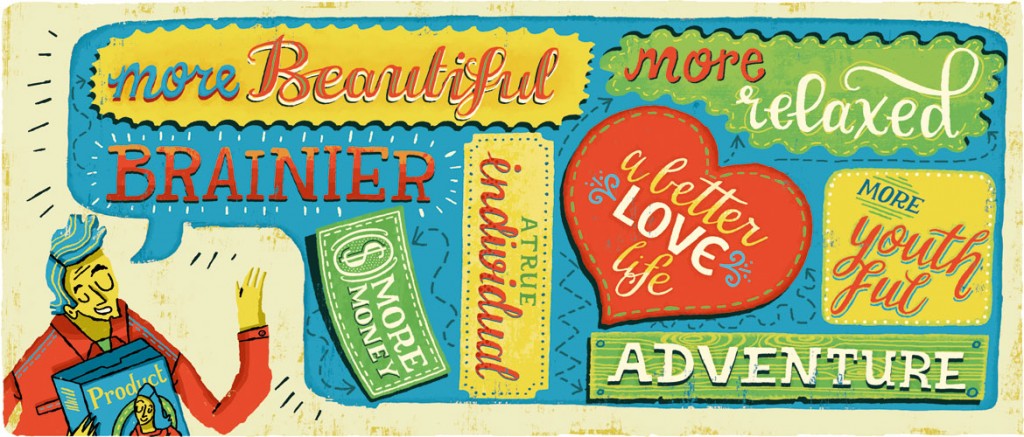Illustrated by David Flanagan
Recently, Amanda discussed on the Upserve blog how the business applications of “Big Data” is a concept that has been getting a lot of attention in the media during the recent election season. Big Data – or a massive set of data that can be too big to handle, interpret, and read without the help of technology – can also provide tremendous insights and opportunities.
Why is this important, and what can you do with the data once you’ve collected it? Thinking about the psychology and science of behavior (in this case, spending habits), is one way to use Big Data to make connections that will be useful in building loyalty in your business.
In this Harvard Business Review post, Alex Pentland discusses the importance of data providing access to “objective information about people’s behavior” as opposed to “what they tell the world their behavior is.”
The article highlights how researchers at MIT are studying Big Data patterns to apply research to the financial market and find solutions for the economy and a more sustainable future. Ultimately, their findings are helping to understand that “markets are not just about rules or algorithms; they’re about people and algorithms together.”
This is true on a much smaller scale for small businesses trying to succeed in a big box world, who need to maximize their results much more efficiently, but also have the unique ability to personally connect with their customers.
As a small business owner, sometimes it feels like gambling when we put so much time and money into a big marketing campaign aimed at generalizations or stereotypes of what people want. Big data, including comprehensive demographics and customer stats at your fingertips, will allow you to go much further.
Pentland writes that:
Analysis of Big Data is increasingly about finding connections between people’s behavior and outcomes. Ultimately, it will enable us to predict events.
Here are some ways you can apply this kind of thinking to your own marketing strategy:
Think About Customers as Part of Social Groups, On- and Offline
According to the HBR post, scientists understand that behavior is largely determined by social context and is “much more predictable” than we suspect. By noticing what groups your most loyal customers fall into, you can sometimes predict behavior based on common spending habits. along with demographics. Age stats are helpful, but try taking into consideration many different aspects of groups, like how different generations tend to use technology, the dining habits of couples with children or notice the kind of people people who respond well to theme nights, for example.
Track Promotions to See Patterns and Target Campaigns
Now that you are identifying groups, patterns will begin to emerge as you track your promotional efforts in person and online in social networks or email marketing efforts. Beginning to tailor your promotions to engage different types of customers differently can provide even more data that helps to predict outcomes, creating a valuable feedback loop. In less time, you will be able to adjust accordingly in small ways throughout your marketing planning, online engagement, and even in-person customer service.
Remember, It’s Not Just About Numbers
If you’re not familiar with Upserve (a client), they’ve designed a payment-processing system with built-in marketing tools and a convenient loyalty program. Angus Davis (founder) is passionate about helping small businesses grow, and Upserve is built with small businesses and their customers in mind.
Another related Harvard Business Review post goes even further in discussing the human component of Big Data:
We often forget about the human component in the excitement over data tools. Consider how we talk about Big Data. We forget that it is not about the data; it is about our customers having a deep, engaging, insightful, meaningful conversation with us – if we only learn how to listen.
Big Data that comes from payment processing is typically too hard to digest, making it impossible to actually use any of that data. What we love about Upserve is that they use that data and turn it into really useful information that helps you with your customers – they’ll tell you if a rainy day affected sales, if you should cater more to a certain demographic, who your most valuable customers are, and all kinds of really useful stuff. This data can help you create incentives specifically for your most loyal customers.
Ultimately, the reason why we love working with a company like Upserve is because they care as much about small businesses as they do about their customers. They’ve put together a really fascinating suite of (practically free) tools that offer a simple, yet powerful, approach to making that successful human connection … and you know how much we believe in the power of a human connection.




